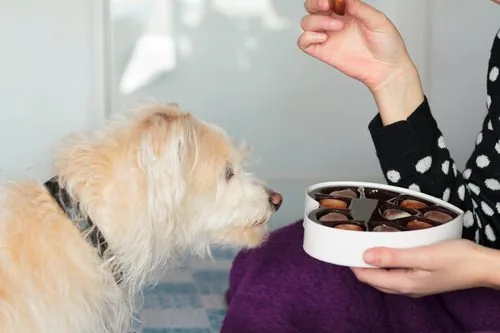Dog Ate Chocolate: Urgent Steps for Chocolate Ingestion in Dogs
If you discover that your dog has ingested chocolate, it’s natural to feel alarmed. Chocolate contains substances that are toxic to dogs, and the severity of the toxicity depends on the type of chocolate, the amount consumed, and your dog’s size. Immediate action is essential to minimize potential harm. This guide outlines what you should do if your dog eats chocolate and how to recognize the signs of chocolate poisoning. For immediate assistance, call St. Paul Pet Hospital at (651) 789-6275.

What Makes Chocolate Dangerous?
Chocolate contains theobromine and caffeine, two stimulants that dogs process much slower than humans. Theobromine is particularly harmful and can lead to various health issues in dogs, including heart problems, kidney damage, and even death.
Types of Chocolate and Levels of Toxicity
- Milk Chocolate: Generally contains lower levels of theobromine but can still be dangerous in larger quantities.
- Dark Chocolate: Has higher levels of theobromine and poses a greater risk even in small amounts.
- White Chocolate: Contains minimal theobromine but high fat content, which can lead to other health issues.
Calculating the Risk
The risk to your dog depends on its size and the type and amount of chocolate consumed. Generally, smaller dogs and those that consume dark chocolate are at greater risk.
Immediate Actions to Take if Your Dog Eats Chocolate
- Do Not Wait for Symptoms to Appear: If you know your dog has eaten chocolate, don’t wait for symptoms to develop. Early intervention is critical.
- Contact St. Paul Pet Hospital Immediately: Call us at (651) 789-6275 to discuss the situation with our veterinary team. We can provide guidance on whether your dog needs to be seen based on the amount and type of chocolate ingested.
- Information to Have Ready: When you call, be ready to inform the veterinarian about the type and amount of chocolate consumed, and the time of ingestion. This will help in assessing the urgency of the situation.
Symptoms of Chocolate Poisoning
- Restlessness
- Excessive Thirst
- Pacing or agitation
- Vomiting
- Diarrhea
- Rapid breathing
- Seizures
In extreme cases, symptoms can escalate to heart failure, coma, or even death. This is rare but underscores the importance of swift action.
Preventing Chocolate Ingestion in Dogs
Always keep chocolate stored away in secure cabinets out of your dog’s reach. Educate all family members, especially children, about the dangers of chocolate to dogs. Train your dog to “leave it” or “drop it,” which can be lifesaving commands in situations where they may find or be offered chocolate. Consider safe, dog-friendly alternatives for treats, especially during holidays like Easter or Christmas when chocolate is more accessible.
When to See a Veterinarian
If your dog consumes any amount of chocolate, contact St. Paul Pet Hospital immediately at (651) 789-6275. Do not try to manage the situation at home without consulting a professional.
Even if your dog seems fine after initial treatment, follow-up visits might be necessary to ensure there are no lingering effects from the theobromine.
Educating Yourself About Chocolate Dangers for Dogs
Understanding the risks associated with chocolate ingestion in dogs and knowing the immediate steps to take can save your pet’s life. Always keep chocolate out of reach and educate everyone in your home about its dangers. If an accident happens, quick action and professional guidance from your vet are your dog’s best chance. Remember, St. Paul Pet Hospital is here to help in these urgent situations. Call us at (651) 789-6275 for immediate assistance.

